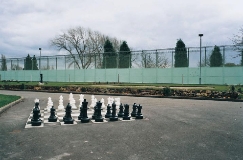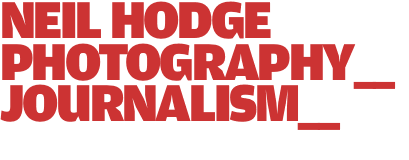Site created by Amplitude. |
||
Border Country review
Belfast Exposed Photography and The Winchester Gallery, Melanie Friend – Price £12
Melanie Friend’s latest book, Border Country, looks at the UK’s immigration removal centres where those people who have had their applications for asylum and refugee status declined are sent before being “removed” to their home country.
Friend, a senior lecturer in media and film studies at the University of Sussex, began work on Border Country in 2003. Since then, more than 25,000 people per year have been held for some period in immigration detention in the UK. As part of her project, Friend has photographed the visits rooms in eight immigration removal centres (IRCs) including Dover, Lindholme (near Doncaster), and the notorious Yarl’s Wood (near Bedford), set up in 2001 to hold up to 900 detainees – making it Europe’s largest detention centre at the time – and burnt down in a riot the following year.
As a visitor Friend met asylum seekers and migrants in several IRCs and was given special access to record interviews with male detainees in Dover and female detainees in Yarl’s Wood. The book includes a compact disc of voice recordings of detainees talking about their experiences in their home countries and their lives in detention.
This is not the first time that Friend has combined sound and image in her work. Her 1996 exhibition Homes and Gardens: Documenting the Invisible used sound and image to explore human rights abuses in Kosovo under the Milosevic regime.
Using a medium-format camera, Friend’s photographs show the exteriors and interiors of the communal areas of the detention centres, from the moat at Dover, the recreation area at Lindholme and the car-park at Colnbrook, to the visits room at Heathrow and the chapel and multi-faith centre at Dover. Immaculately kept, most of the centres are designed in the same way with the same sterile furniture, arranged with the same kind of symmetry that would look right at home in a Stanley Kubrick shot. Friend readily captures the idea that these rooms embody a sense of bureaucratic and institutional functionality, rather than have any sense of comfort or warmth.
Tellingly, Friend’s photographs do not show a single detainee or guard: the hundred thousand or more people that have passed through these centres in the four-years since Friend began her project are invisible. Without the accompanying CD of detainees’ interviews, it is hard to believe that anyone is actually being detained. As a result, the CD takes on a tremendous significance and it will be for others to decide whether it is fit and proper for a photographer’s subject matter to rely so heavily on sound rather than image to convey the point of her work.
“Friend’s photographs do not show a single detainee or guard: the hundred thousand or more people that have passed through these centres in the four-years since Friend began her project are invisible”

